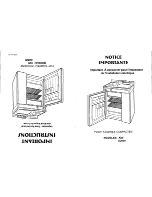
Start-up
Page EN-30
■
Do not connect to a timer or a sepa-
rate remote-controlled system for dis-
tance monitoring and control.
■
Since all poles of the appliance can-
not be disconnected from the mains
via an accessible disconnecting de-
vice, an all-pole disconnecting device
in accordance with overvoltage cate-
gory III must be connected within the
house installation with at least 3 mm
contact clearance; consult a qualifi ed
professional if necessary (see “Ser-
vice” on page EN-36).
■
Do not kink or pinch the mains cable
or lay it over sharp edges. This can re-
sult in a break in the cable.
CAUTION
Fire hazard!
Improper handling of the appliance can
lead to fi re and damage to property.
■
Connect the appliance only to a
properly installed and earthed elec-
tric socket. Do not connect to a mul-
ti-socket extension cable or a mul-
ti-socket plug.
■
Do not locate multiple portable sock-
et-outlets or portable power supplies
at the rear of the appliance.
NOTICE
Risk of damage to property!
If the cooling appliance has been trans-
ported horizontally, lubricant from the
compressor may get into the cooling
circuit.
■
If possible, do not tilt the cooling ap-
pliance horizontally.
■
Allow the appliance to stand upright
for approx. 2 hours after transport
and before connecting. This allows
the lubricant enough time to fl ow
back into the compressor.
• Insert the mains plug into an easily ac-
cessible and properly installed socket
(220–240 V~/50 Hz).
You will find all important information
about operation from page EN-12.
Reversing the door hinges
If the layout of your space requires it, you can
reverse the hinges of the fridge door (2) and
freezer door (8). However, this will require
some manual skills.
Besides the parts included, you will need the
following tools to reverse the door hinges:
– medium-size cross-tip screwdriver
– medium-size slotted screwdriver
– size 8 and 10 spanners as necessary
• Please read through all of the following
steps before starting work.










































